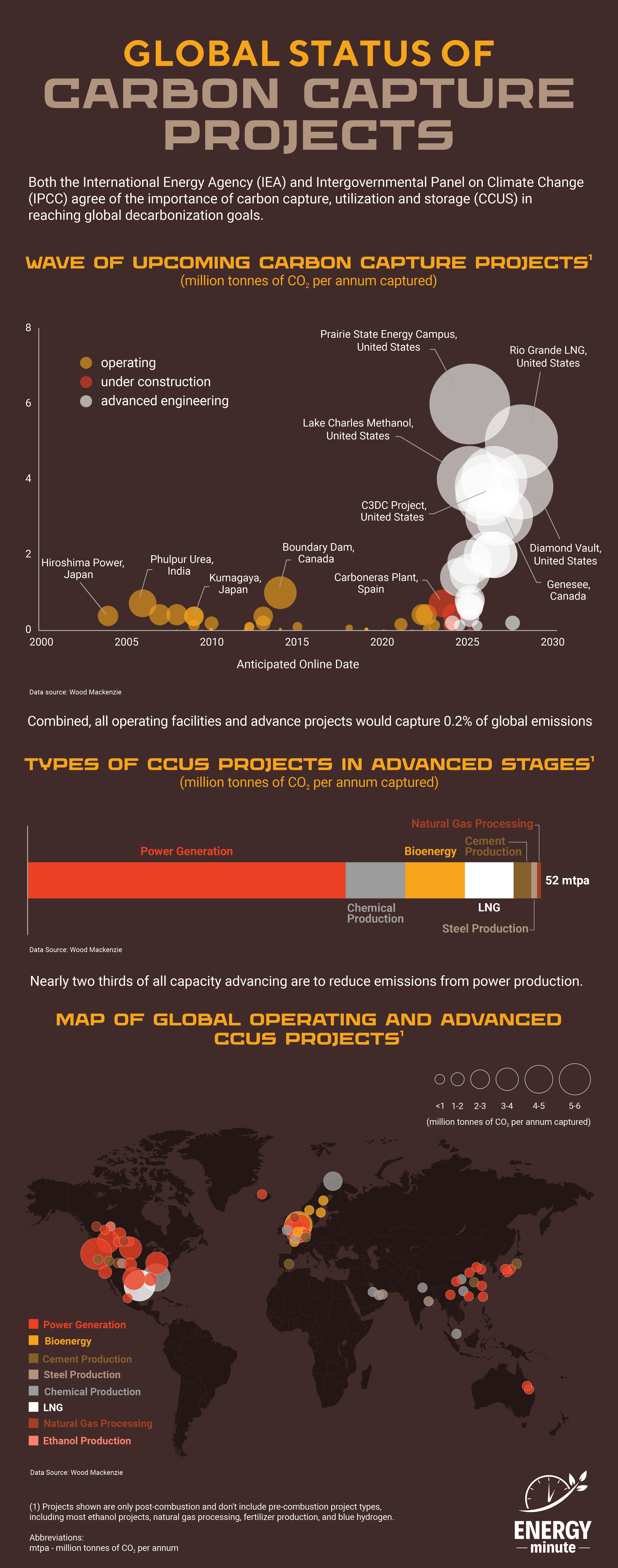Global Status of Carbon Capture Projects

Carbon capture, utilization, and storage (CCUS) technologies are designed to reduce the amount of carbon dioxide (CO2) emissions that are released into the atmosphere. The growth in carbon capture involves the deployment of these technologies at an increasing number of industrial facilities, power plants, and other sources of CO2 emissions.
Here are some important things to know about the growth in carbon capture:
- The need for carbon capture is growing: The world’s energy demand continues to increase, and so does the amount of CO2 emissions. Carbon capture is an essential tool for reducing the impact of these emissions on the environment and mitigating the effects of climate change.
- Carbon capture technology is advancing: Advances in technology have made carbon capture more efficient and cost-effective. The development of new materials and processes has made it possible to capture more CO2 from industrial processes and power generation.
- Governments are supporting carbon capture: Governments around the world are offering incentives and subsidies for the development and deployment of carbon capture technologies. In many cases, carbon capture is seen as a critical component of climate change mitigation strategies.
- Carbon capture is being deployed in a range of industries: Carbon capture is being used in a variety of industries, including power generation, cement production, and steel manufacturing. As more industries recognize the importance of reducing their carbon footprint, the demand for carbon capture is expected to grow.
- Carbon capture can be used in conjunction with other technologies: Carbon capture can be used in conjunction with other technologies, such as carbon utilization and storage. Carbon utilization involves using captured CO2 for industrial processes or to create products, while carbon storage involves storing CO2 in geological formations deep underground.
Overall, the growth in carbon capture is a promising development in the fight against climate change. While there are still challenges to be addressed, such as cost and scalability, the continued advancement and deployment of carbon capture technologies are essential for achieving a more sustainable future.
What types of projects typically use carbon capture?
Carbon capture is typically used in projects aimed at reducing the amount of carbon dioxide (CO2) emitted into the atmosphere. There are several types of projects that use carbon capture technology, including:
- Power generation: Carbon capture can be used in power plants that burn fossil fuels such as coal, oil, and natural gas to generate electricity. The captured CO2 can then be stored underground or used in industrial processes.
- Industrial processes: Carbon capture can be used in industries such as cement, steel, and chemical production to capture CO2 emissions from industrial processes.
- Oil and gas production: Carbon capture can be used in the production of oil and gas to capture the CO2 that is released during the process. This CO2 can then be used for enhanced oil recovery or stored underground.
- Bioenergy: Carbon capture can be used in bioenergy projects, such as the production of biofuels, to capture the CO2 emitted during the process.
- Direct air capture: Carbon capture can also be used to remove CO2 from the atmosphere directly using a process called direct air capture (DAC). This technology is still in its early stages of development but has the potential to play a significant role in reducing global CO2 emissions.




